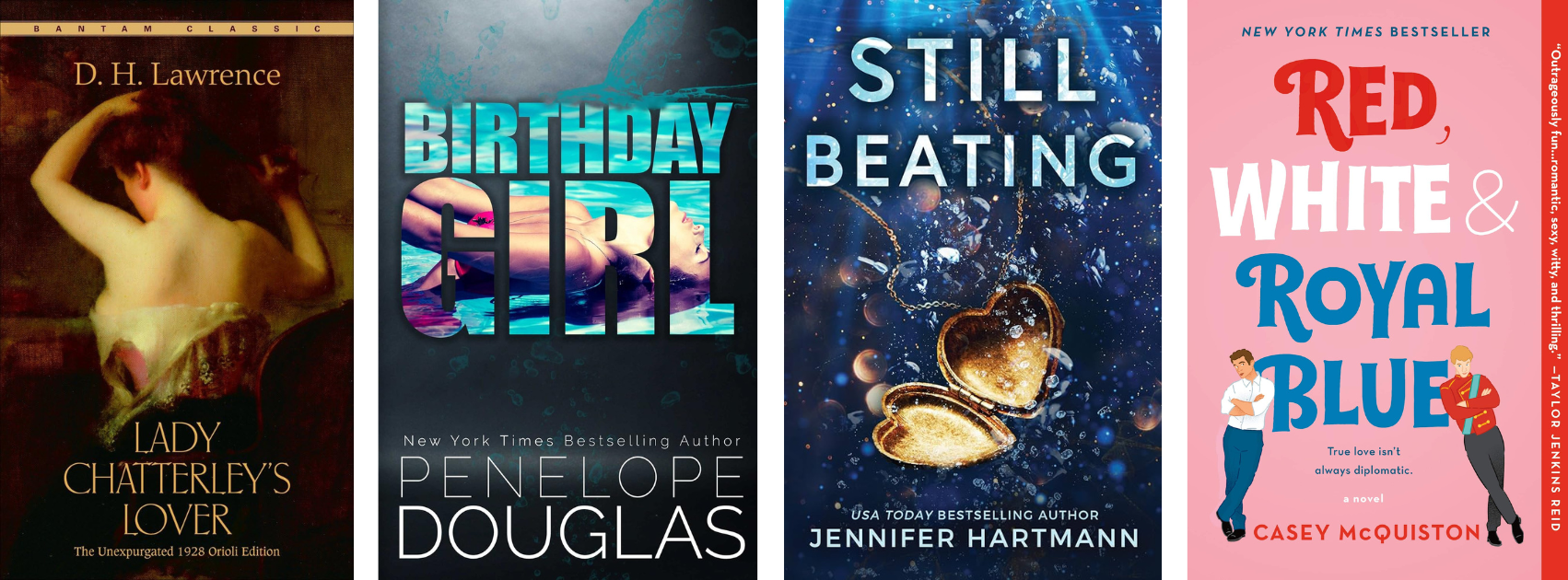Trope Deep Dive: Forbidden Romance
What is Forbidden Romance?
The forbidden romance trope centers on a love affair that is deemed unacceptable or taboo by societal norms, cultural traditions, familial expectations, or other external forces. This disapproval creates a barrier between the lovers, heightening the stakes and intensifying the emotional depth of the narrative. The allure of the forbidden adds a layer of tension and passion, making these stories both captivating and emotionally charged.
Common Elements of Forbidden Romance:
External Opposition: The relationship faces resistance from outside sources, such as family members, societal norms, or legal constraints.
High Stakes: The consequences of pursuing the romance can be severe, including social ostracism, personal loss, or even danger.
Moral Dilemmas: Characters often grapple with ethical questions, balancing their desires against their duties or societal expectations.
Secrecy: The need to hide the relationship adds an element of suspense and urgency to the story.
Why Readers Love It
Intense Emotion: The high stakes and obstacles amplify the emotional intensity, making the love story more compelling.
Relatable Conflict: Many readers can empathize with the struggle between personal desires and external expectations.
Dramatic Tension: The constant threat of discovery or consequence keeps readers engaged and invested in the outcome.
Exploration of Boundaries: These stories often challenge societal norms, prompting readers to reflect on cultural and moral boundaries.
Key Elements of a Forbidden Romance
The Setup: The Source of Forbiddance
Societal Norms: Differences in class, race, or religion that make the relationship taboo.
Familial Opposition: Family feuds or expectations that prohibit the union.
Legal or Ethical Barriers: Laws or moral codes that deem the relationship unacceptable.
Power Dynamics: Relationships where imbalances of power make the romance inappropriate.
The Conflict: The Struggle to Be Together
External Pressure: Society, family, or institutions actively working to keep the lovers apart.
Internal Dilemmas: Characters wrestling with guilt, duty, or fear of repercussions.
Risk of Exposure: The constant threat of their secret being discovered.
The Emotional Turning Point: Decision to Fight or Surrender
Moment of Choice: Deciding whether to pursue the relationship despite the risks.
Revelation: Understanding the depth of their feelings and what they are willing to sacrifice.
The Resolution: Consequences and Acceptance
Acceptance: Finding a way to be together despite the odds or accepting separation.
Consequences: Facing the outcomes of their choices, whether positive or negative.
Examples in Popular Romance Novels
📖 Lady Chatterley's Lover by D.H. Lawrence
This classic novel tells the story of Constance Reid, an upper-class woman whose husband, Sir Clifford Chatterley, is paralyzed from the waist down. She embarks on a passionate affair with Oliver Mellors, the estate's gamekeeper. Their relationship defies class boundaries and societal expectations, highlighting the intense connection that blossoms despite societal constraints.
📖 Birthday Girl by Penelope Douglas
Jordan and Pike's relationship is fraught with tension due to their significant age difference and the fact that Pike is her ex-boyfriend's father. Their attraction challenges societal norms and personal boundaries, making their romance a quintessential example of forbidden love.
📖 Still Beating by Jennifer Hartmann
After being kidnapped together, Cora and her sister's fiancé, Dean, form a bond over their shared trauma. Their developing relationship is complicated by existing commitments and the emotional aftermath of their ordeal, embodying the forbidden romance trope through their struggle to reconcile their feelings with their circumstances.
📖 Red, White & Royal Blue by Casey McQuiston
This novel explores the secret romance between Alex Claremont-Diaz, the First Son of the United States, and Prince Henry of Wales. Their relationship is deemed forbidden due to political implications and the expectations placed upon them by their respective countries, offering a modern twist on the trope by blending political intrigue with heartfelt romance.
How to Use Forbidden Romance in Your Own Writing
Establish Clear Boundaries: Define what makes the romance forbidden to create tension.
Develop Deep Characters: Ensure characters have compelling motivations for pursuing the relationship despite obstacles.
Balance Tension and Release: Use the push-pull dynamic to keep readers engaged.
Address Consequences: Show the realistic outcomes of defying societal norms or rules.
Get Inspired: Writing Prompts & Story Starters
Two rival political campaigners find themselves irresistibly drawn to each other during a heated election season.
A priest grapples with his vows as he falls in love with a member of his congregation.
In a dystopian society where love is regulated, two individuals discover forbidden emotions.
A soldier and a civilian from opposing sides of a conflict begin a secret affair.
An arranged marriage leads to unexpected feelings for someone outside the union.
Final Thoughts
The forbidden romance trope captivates readers by exploring the tension between desire and societal constraints. It delves into the complexities of human emotions and the lengths individuals will go to for love, making it a timeless and compelling narrative device.
💬 What are your favorite forbidden romance stories? Have you explored this trope in your writing? Share your thoughts in the comments!
📩 Subscribe to my newsletter for more insights into romance tropes, writing tips, and book recommendations!



